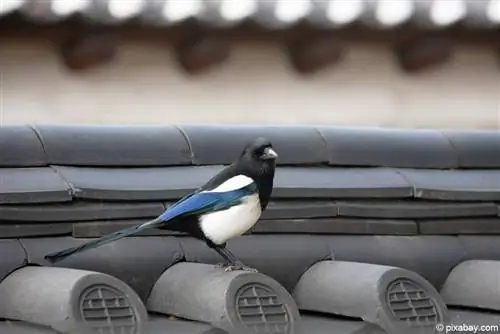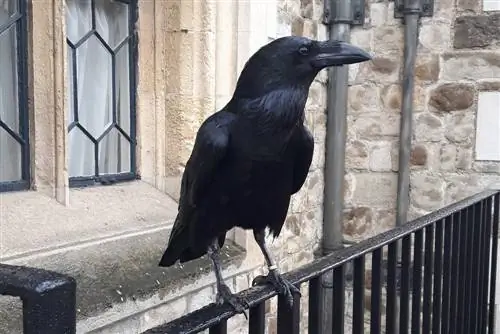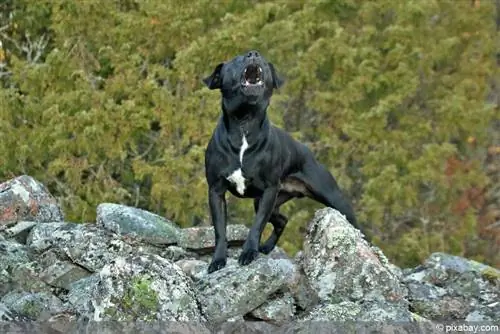- Author admin [email protected].
- Public 2023-12-17 03:39.
- Last modified 2025-01-24 12:45.
If you have wild bees in your garden, you can be happy. The beneficial insects are needed to pollinate plants and are extremely peaceful. In contrast to honey bees, they only sting in extreme emergencies, for example if they are stepped on or their life is threatened for another reason. Control is therefore only necessary if the bees appear in undesirable areas.
Species and lifestyle
In contrast to honey bees, wild bees are often solitary and live solitary lives except for the period of reproduction. However, there are a few exceptions that form colonies just like honey bees. However, solitary species such as mason bees are more common. They live in cracks in walls, cracks between stones and holes in wood. They often use existing insect holes. The red mason bee is one of the most common types of mason bees. It uses, among other things, thatched roofs, high stems and clay walls. They are found primarily near forest edges but also in human settlements and in gardens. However, there are also other species, such as bumblebees, masked bees and furrow bees. These sometimes create larger nests.
In contrast to honey bees, wild bees only sting when they are acutely and immensely threatened. This can be the case, for example, if they are on the floor and are stepped on. Pets such as dogs and cats, children playing and barefoot runners in particular have an increased risk of being stung. On the other hand, anyone who sits while eating or walks with shoes on is almost not in danger. The animals are very peaceful and useful, as well as almost harmless.
To fight or not?
Although red mason bees and the like are generally not dangerous, they can still pose a risk. This is the case, for example, if children or pets play in the garden more often or if there is an allergy to insect bites. Playgrounds or playgrounds should therefore be appropriately safe. Getting rid of wild bees should still be done gently and gently. Because the beneficial insects have important tasks in nature.
Remove nesting sites
Instead of control, it is possible to deprive the bees of opportunities to build nests. Should be avoided:
- cracked masonry and joints between lawn edging stones
- stones lying around
- exposed wood
- long hollow stems, for example of reed or bamboo
If these items are removed from the garden or at least moved to a rarely used area, there will be no nesting places for the bees. As a result, they will spend less time in the garden. So-called bee pastures, i.e. plants to which bees are attracted, should also be planted so that they are not in heavily frequented areas.
Note:
The bees need warm and sunny places. When areas are shaded, they become less attractive to insects.
Provide nesting sites
It may seem contradictory at first to install nesting sites to combat bees. However, if there are opportunities to build nests elsewhere, the bees generally stay away from the places that are less favorable for them. Suitable options for building nests are the materials mentioned above. However, the following two options are even cheaper and more attractive. On the one hand, they are a block of wood or a piece of tree trunk. This is provided with drill holes of different sizes. The holes should be of different diameters and depths to provide shelter for multiple species of bees.

On the other hand, ready-made nesting boxes and nesting boards from stores can be used. No effort is necessary with these, they can simply be hung up or laid out.
Tip:
Insect nesting aids or insect hotels made with different materials can provide a home for many beneficial insects in the garden. This is useful for the yield of various plants, can help control pests and protects natural biodiversity.
Expelling wild bees
In addition to the targeted deployment of nest building opportunities and the removal of nesting opportunities and food sources in other areas, the bees can also be specifically driven away. Gentle options that do not harm the bees are suitable for this.
These options include:
Coffee and coffee grounds
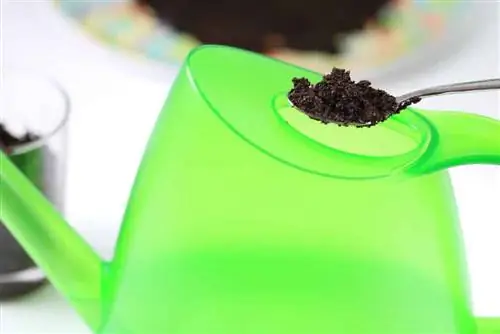
Ground coffee and coffee grounds can be used as an odor barrier in smaller areas. Using coffee grounds saves money and can also serve as fertilizer, making it a cheaper choice. It can be spread wet and dried or burned when dry. The aromatic substances have a deterrent effect. The nutrients in the coffee or coffee grounds can also be used as fertilizer. Another advantage is that the smell is very pleasant for human noses.
Vinegar
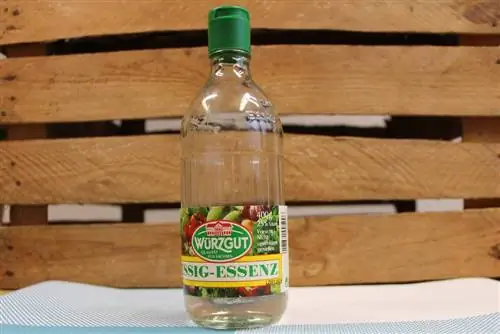
The strong, pungent smell of vinegar can have a particularly deterrent effect on insects and therefore also on bees. However, you should not choose fruit vinegar, but rather vinegar essence. For example, fruit vinegar could attract flies due to its smell. If there are weeds in an area, the vinegar essence can be applied directly to the ground and will kill the unwanted growths and drive away the bees. In all other cases, the vinegar essence should be applied to cloths. These can then be laid out or hung up.
Candles
Scented candles, for example with citronella, can also keep insects away thanks to their aromatics. However, they are more suitable for repelling wild bees in limited areas, for example when eating on the table or on the terrace. They are rather unsuitable for edging paths or lawns - at least when pets or children play in these areas.
Herbs

Certain herbs have a deterrent effect on beneficial insects. These include, among others, basil, lemongrass and lemon balm. The plants themselves but also scented oils from them can provide the necessary deterrent. Planted outdoors or placed in pots, areas can be made “bee-proof”. The herbs are not a guarantee, but they do gently reduce the risk of stings.
Smoke
Incense sticks, burnt herbs or incense candles scare away the beneficial insects. Again, care should be taken to ensure that children and animals cannot come into contact with the smoldering materials - as burns are possible. In addition, the smoke is a limited effective choice for driving away wild bees. On large, open areas the smoke is quickly blown away and then only has a limited effect.
Tea tree oil
Another odorant that can be used efficiently but gently to drive away insects is tea tree oil. Diluted with water and placed in an aroma lamp or dripped onto damp cloths, the aromatic substances are evaporated well and can be distributed comparatively over a wide area. This makes this home remedy suitable for repelling insects in both smaller and larger areas.
Why drive away gently?
Red mason bee, bumblebee and furrow bee are just a few of the forest bee representatives but they are definitely useful. Unfortunately, the populations have had some difficult years and should be fully protected due to their role in the environment. Otherwise, the beneficial insects could quickly find themselves in danger again due to negative influences. And these influences mainly come in the form of:
Insecticides and Pesticides
Unfortunately, the toxins used for plant protection are not always safe for animals.
Less food
Due to a lack of suitable food sources, the bees are no longer adequately supplied.
Diseases
Some infections but also parasites sometimes decimate the number of bees too much. This not only creates problems for the animal world.
Because bees are crucial for the pollination of plants and therefore also for the nutrition of humans and animals. Their preservation is therefore very important, which is why no harmful or aggressive means should be used against them.




